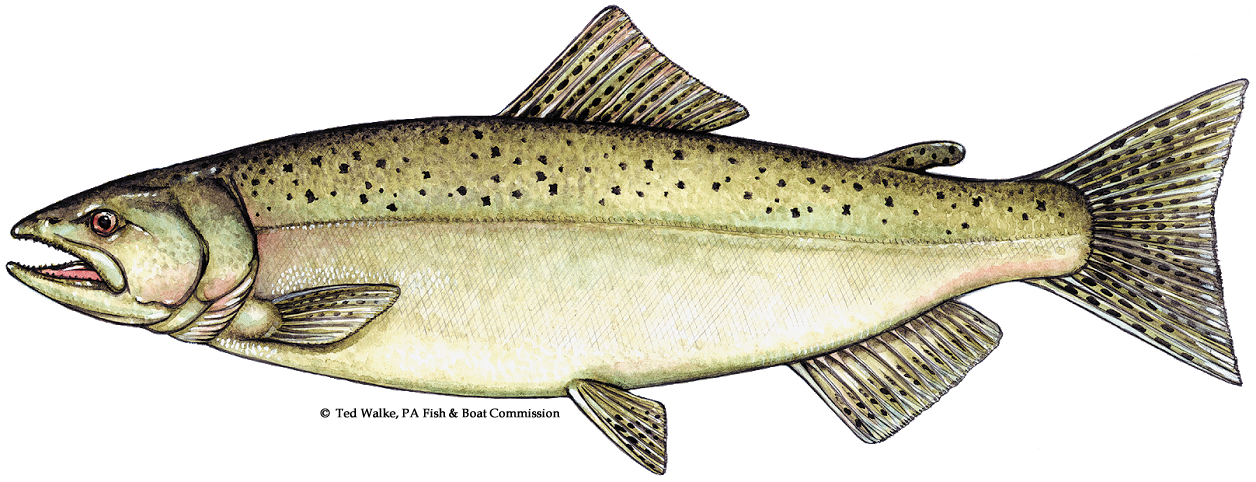We know the salmon come home to spawn in the spring & fall runs. They swim from the ocean up the
Feather River and surrounding areas some make it to the Feather River Fish Hatchery. Click this link for
the history of the Feather River Hatchery.
Feather River Salmon Spawning Restoration Project August 2017
As our Salmon numbers continue to steadily decline, drought, water diversion, water quality &
temperature are some of topics we need to be aware of.
Watch this 5-minute video on Species in the Spotlight: Sacramento River Winter-Run Chinook
2021– Record spring salmon run on Sacramento River tributary turns into disaster as most fish die before
spawning. https://sacramento.newsreview.com/2021/08/05/record-spring-salmon-run-on-sacramento-river-tributary-turns-into-disaster-as-most-fish-die-before-spawning/
Dams/Water Diversion: -New UC Davis Study Finds Dams Are Ineffective for Cold-Water Conservation
for Salmon and Trout Chinook Salmon (Protected): https://www.fisheries.noaa.gov/species/chinook-salmon-protected

COOL FACTS
SIZE: The average weight for chinook salmon is around 40 lbs. or 18 kg. The common length for chinook salmon is 70 cm (27.6 inches) with the maximum recorded length for Chinook salmon being 159 cm (50inches).
RANGE: The range of Chinook salmon extends from the Arctic, northwest to northern Pacific: drainages from Point Hope, Alaska down to Ventura River, California. They are also found in Honshu Japan, the Sea of Japan, the Bering Sea, and the Sea of Okhotsk.
HABITAT: Chinook salmon are an anadromous species that spend their adult life in saltwater and then migrate into their freshwater natal streams to spawn.
DIET: During their adult life-history stage, Chinook feed on squid and fish such as the sand lance and herring. In the juvenile stages, Chinook feed on terrestrial insects and small crustaceans.
Natural History: Chinook salmon are an anadromous species which at different phases of their life history, inhabit marine, brackish, and freshwater habitats. They are the largest of the Pacific salmon species. Adult Chinook migrate from the sea to their natal freshwater streams to spawn. This is a cold-water species and prefers waters with temperatures no higher than 25 degrees Celsius. Chinook salmon are semelparous or single spawners, meaning they only spawn once before they die. Chinook salmon exhibit significant variability in size and age at maturation.
Chinook salmon exhibit two distinct types of life-history strategies. These two types of strategies are categorized as an ocean‐type or a stream‐type. The ocean‐type of Chinook salmon typically migrates to the ocean within their first three months of life. They spend their ocean life in coastal waters. Ocean‐type Chinook tend to use estuaries and coastal areas more extensively than other juvenile salmonids. The stream‐type of Chinook salmon are common in freshwater streams of large river systems. They undergo extensive offshore migration in the central North Pacific natal streams and have longer stays in freshwater than their ocean-type counterparts. At their time of saltwater entry, stream‐type chinook are much larger than their ocean‐type cohorts.
Conservation: Currently there are two Endangered population segments of Chinook salmon, seven Threatened population segments of Chinook salmon, one Candidate population segment and one Species of Concern population segment of Chinook delineated under the Endangered Species Act. A variety of conservation efforts and initiatives have been undertaken by multiple fishery management jurisdictions to restore habitat, remove and modify dams, improve water quality, improve in- streamflow, and acquire essential fish habitat for Chinook salmon.
Migration Behavior: Chinook salmon are a migratory species. Chinook salmon are born in fresh waterand then migrate to the ocean for their adult lives and return to freshwater to reproduce.


